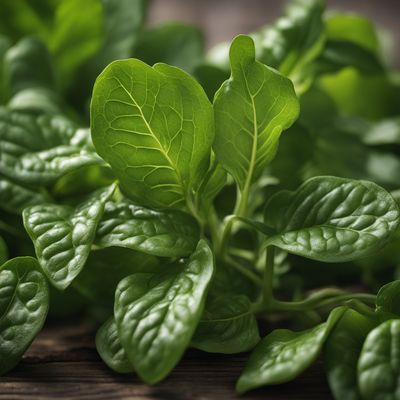
Ingredient
Sorrel
The Tangy Herb: Unveiling the Secrets of Sorrel
Sorrel, scientifically known as Rumex acetosa, is a leafy green herb with slender, arrow-shaped leaves. It boasts a bright green color and a slightly acidic taste, reminiscent of lemon or sour apples. The leaves are tender and have a delicate texture, making them perfect for both raw and cooked preparations. Sorrel's vibrant appearance and tangy flavor make it a visually appealing and refreshing ingredient in a wide range of culinary creations.
Origins and history
Sorrel has a rich history that dates back to ancient times. It is believed to have originated in Europe and Asia, where it was highly valued for its medicinal properties. Sorrel was used by ancient Greeks and Romans for its diuretic and cooling effects. Over time, it spread to other parts of the world, including North America, where it was introduced by European settlers. Today, sorrel is cultivated and enjoyed in various cuisines around the globe.
Nutritional information
Sorrel is a nutrient-dense herb that provides essential vitamins and minerals. It is particularly rich in vitamin C, vitamin A, iron, and potassium. Additionally, sorrel is low in calories, making it a healthy choice for those watching their weight.
Allergens
Sorrel may cause allergic reactions in individuals who are sensitive to oxalates. People with kidney problems or a history of kidney stones should consume sorrel in moderation due to its oxalate content.
How to select
When selecting sorrel, look for fresh, vibrant leaves that are free from wilting or discoloration. Choose bunches with crisp stems and avoid any signs of yellowing or sliminess. The leaves should have a firm texture and a bright green color.
Storage recommendations
To maintain the freshness of sorrel, store it in a plastic bag or airtight container in the refrigerator. It is best to use sorrel within a few days of purchase, as it tends to wilt quickly. If needed, sorrel can also be preserved by blanching and freezing for future use.
How to produce
Sorrel can be easily grown in home gardens or containers. It thrives in well-drained soil and prefers partial shade. Sow the seeds in early spring or late summer and keep the soil consistently moist. Harvest the leaves when they reach a suitable size, taking care not to remove more than one-third of the plant at a time to ensure continuous growth.
Preparation tips
Before using sorrel, rinse the leaves thoroughly to remove any dirt or debris. Sorrel can be enjoyed raw in salads or used as a garnish for soups and sauces. It can also be cooked in various dishes, such as omelets, quiches, or sautés. When cooking sorrel, it is important to note that prolonged heat exposure can cause it to lose its vibrant color and tangy flavor, so it is best to add it towards the end of the cooking process.
Substitutions
If sorrel is not available, a suitable substitute can be spinach or Swiss chard, although they lack the distinct tangy flavor of sorrel.
Culinary uses
Sorrel is widely used in French cuisine, particularly in classic dishes like sorrel soup (potage à l'oseille) and sorrel sauce (sauce à l'oseille). It is also a popular ingredient in Eastern European cuisines, where it is used in soups, salads, and savory pies. Additionally, sorrel can be incorporated into pasta dishes, risottos, and even cocktails, adding a refreshing and tangy twist.
Availability
Sorrel is commonly available in Europe, North America, and parts of Asia. It can be found in grocery stores, farmers markets, and specialty food stores, especially during the spring and summer seasons.

